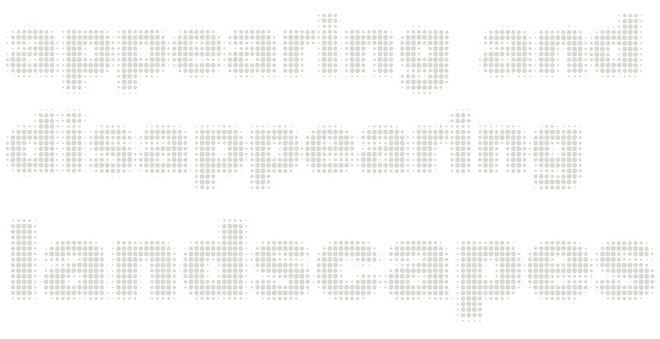Welcome to the studio and the studio blog. The studio is built up around four to six themes during the semester. The first theme is titled Encircling the Field, and contains assignment 1. It will go for the first to weeks, theN follows the theme Imbedded Information that will go over three weeks, and so on. A variety of exciting guests will be introduced for you under each theme.
Timetable and content will appear on the blog and on moodle before we start up the 11th of January. The first three days of the first session is compact. All the teachers will be there, including prof. Ellen Braae from Forrest and Landscape at Life Sciences/Copenhagen University. She will give a lecture on our encircling of Jæren.
Each theme, or session, will start up with a text from the teachers, and introducing what we can call Found Papers. This is reference texts that will be part of the common studio library.
Alice Labadini, who is teaching in the studio, will send you three Found Papers for the first theme, Encircling the Field, very soon on mail. For you to have some nice reading in the beginning of the new year.
This texts is short; an interview, a conversation and a chronicle. The texts can be seen as opening a passage for you to do your own hunt for relevant and interesting information, expanding the studio library. This means that you will not get a large unreadable reference list of literature at the start, but it will expand during the studio – also with your findings.
Everything will be on the blog which is a main studio tool.
The quotation from the first text, The Planetary Gardener, introduces us to a fact of the studio; The students arrives from very different backgrounds, field of study and countries.
And it opens up a view into the work of Gilles Clément
The text also invites us into the French scene of landscape architecture where we find people like Michel Desvigne, the fascinating Gilles Vexlard who was teaching in the research part 1, and the prominent force in the French discussion for decades, at the Versailles school, Michel Corajoud. This field also includes Sebastian Marot which Ellen Braae surely will introduce, or at least her Phd student, Svavo Riisto (who is from Jæren) may do it.
“He bases his position on the work of sustained observation, patient experimentation, a knowledge fed by all sorts of cross-disciplinary relationships. This complement the knowledge he acquired during his constant travels – to which Algeria, which he saw as a child, South Africa which he saw as an adolescent, and Nicaragua as a development aid volunteer, constituted the prologue. His attitude is the opposite of that of a specialist”.
Interview by Loretta Coen with Gilles Clément in Scape2007/2
The second text has informed our work a lot and opens up the American landscape urbanism movement and Stan Allens own work and thinking. This conversation between Allen and Sauter also referes to, and is informed by, the social antrophologist Gregory Bateson. The author of Mind and nature and Steps to an ecology of mind which informed me a lot the first time I introduced the notion Appearing and Disappearing Landscapes, at the symposium Architecture and Territory in 1988.
In Florian Sauters conversation with Stan Allen the notion imbedded information relates to what a concept, a project, introduces and opens for:
“One of the things we learnt from Bateson is that he understands ecology as information exchange. He is essentially applying a kind of cybernetic model to natural ecologies. This seems to me very powerfull for a number of reasons.: first of all it does not idealize natural ecology as opposed to social ecology or any other kind of ecology. In other words you can understand all of them as systems of informational exchange. For example if you look at Central Park: it is a landscape with a certain amount of imbedded information. That imbedded information could be comprehended from the fact that the traffic is separated at different levels or that there is a way people have of using it with big open spaces that provoke one kind of activity and dense landscapes that provoke another kind of activity.
You can separate Central Park from its sort of cultural or historical context and then you can understand what works about it. The brilliance of Central Park arises from this continued usability” and Stan Allen summons up in this way:
“Olmsted hit the dynamic just right: there is enough information to keep the system alive, but not to much to overdeterminate the uses”.
Conversation between Stan Allen and Florian Sauter
Archtectural papers III, Natural Metaphor, An Anthology of Essays on Architecture and Nature. ETH/Actar
When we discovered Iñaki Àballos El Pais text, “I would prefer not to” ( in the original version from El Pais/March 2007 titled Bartleby, the architect) as part of the up-front Mosaïc Reading, we discovered his conclusion and introduced our winning competition entry in The Öresund Visions 2040 with this:
“ A credible map of sustainability has yet to be drawn, but there can be no doubt that other aspects already trailed and trialled have run out of whatever credibility they had”.
This lines, imbedded in the text, was presented as the headliner for the mosaic concept and informed our project, gave a direction to it.
Archtectural papers III, Natural Metaphor, An Anthology of Essays on Architecture and Nature. ETH/Actar
This can of course be a reminder for the research and the concepts that will evolve during our studio. Have a nice reading, and open the blog and the web libraries.
Happy new year
Knut Eirik/KED
1 January 2010
Subscribe to:
Post Comments (Atom)


No comments:
Post a Comment